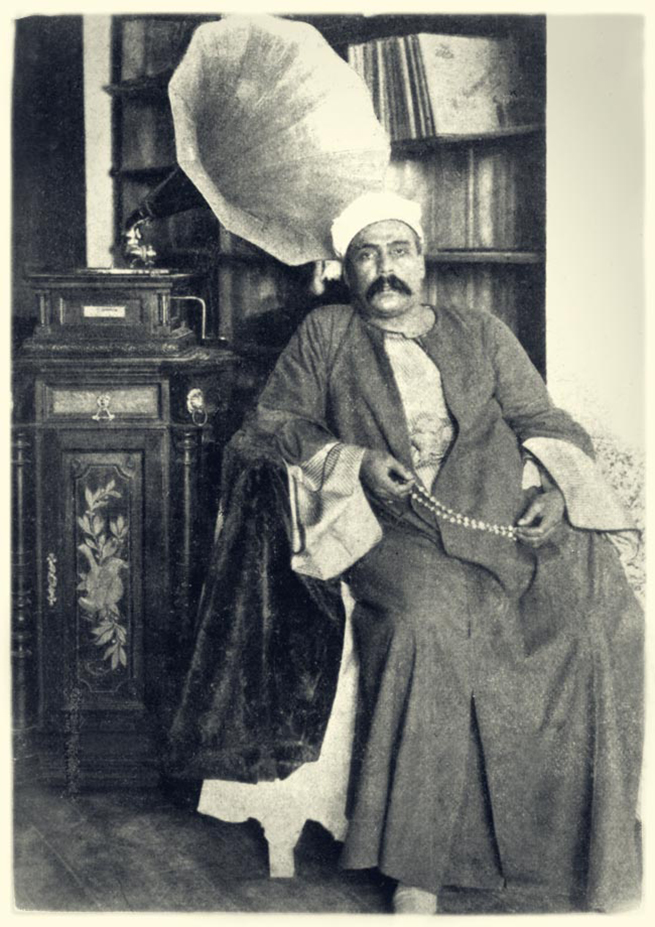Images
All images are courtesy of AMAR Foundation

search

All images are courtesy of AMAR Foundation

The bayyātī maqām
The Arab Music Archiving and Research Foundation (AMAR), in collaboration with the Sharjah Art Foundation (SAF), presents Our Musical System.
The bayyātī maqām is the unparalleled most widely spread maqām from the Arabic Maghreb going west to the Iberian peninsula including Spain and Portugal, then up to the east of the plateau of China, and from the centre of the African continent to Greece and Sicily.
It is given different appellations — bayyātī, dūkāh, shūr, ḥusayn…etc. — depending on the different civilizations.
Theorists rank it as the second original maqām, i.e. the dūkāh (dū (two) and kāh (scale)), following the first original maqām yakāh (yak (one) and kāh (scale)) known as the rāst maqām. Out of all other maqāmāt, the bayyātī has the greatest number of sub-maqāmāt.
The scale order of the bayyātī maqām:
The bayyātī maqām follows the scale order of the rāst maqām, except for the beginning and the maqarr. i.e. from the qarār up to the jawāb, the scales are: dūkāh, sīkāh, jahārkāh, nawā, ḥusaynī, awj, kardān. The kardān is the jawāb of the rāst positioned on the dūkāh, and its position in the scale order displaces the rāst, the latter then replaced by the kardān. According to Muḥammad Zākir Bey, if a performer wished to go up or down in this maqām, the arāḍī and the ajwiba (plur. of jawāb) of these notes must then be used. According to the Turkish method, the ‘ajam barda can replace the awj when going down. Note that this is the case in most musical practices, and is not exclusive to the Turkish practice.
The nature and pattern of the bayyātī maqām:
Muṣṭafa Sa‘īd speaks of the nature and pattern of the bayyātī maqām saying:
The bayyātī is a moderate maqām according to all assessments. A Sheikh unashamedly told me it is a divine maqām, and that it is the reason why all Kuran readers start their reading with the bayyātī maqām. The bayyātī maqām also has a popular aspect: most popular melodies in this region are composed to the most widely spread bayyātī maqām. As explained in theory books, the pattern of the bayyātī starts from the fourth note with the ‘ushshāq, then goes down to the dūkāh.
Yet, this is only what theory books state, and we can’t affirm that they reflect live music practices: some popular tradition melodies for example only use one part of the bayyātī maqām, such as this chord: …
…or:…
…for example: (dal‘ūna)
…for example, or: (sīra hilāliyya)
…among other popular melody traditions.
The bayyātī seems to be the oldest maqām, because the tunes that are said to be very old are all to the bayyātī maqām, and also because it is used in almost all the traditions of Ibrāhīmī religions.
Let us listen to a sample of a smooth and brilliant performance to the bayyātī maqām: a taqsīm played by Sāmī al-Shawwā on the violin, recorded around 1915 by Gramophone on one side of a 25cm record, order # 7-18022, matrix # 4840 Y.
We will now listen to takht Sāmī al-Shawwā, ‘Abd al-Ḥamīd al-Quḍḍābī, and Shaḥāta Sa‘āda, performing to the samā‘ī thaqīl bayyātī labelled as a samā‘ī bayyātī miṣrī on the record. This piece by an unknown composer showcases the bayyātī maqām and its sub-maqāmāt and neighbouring maqāmāt, as well as the performers’ improvisations. The recording was made before 1930 by German record company Polyphone on one side of a 25cm record, order # V.50641, matrix # 577 BN.
The bayyātī maqām has many sub-maqāmāt. And, as mentioned earlier, all theorists since the 19th century have agreed that out of all other original maqāmāt, the bayyātī has the greatest number of sub-maqāmāt. In his Risāla shahābiyya (Shahābī Letter), Mikhā’īl Mashāqa wrote that the bayyātī maqām has 41 sub-maqāmāt, including the: ḥusaynī, kārjahār, muḥayyar, ṭāhir, bayyātī aṣfahān, bayyātī shurī…etc. Each sub-maqām follows its own pattern while never severing its ties with its source. We will discuss the sub-maqāmāt of the bayyātī maqām in future episodes.
Finally, we will listen to Sheikh Yūsuf al-Manyalāwī singing a piece depicting the relation between the bayyātī original maqām and its sub-maqāmāt. Dawr Min abli mā ahwa el-gamāl whose writer is unknown was composed by Ibrāhīm al-Qabbānī. Al-Manyalāwī is accompanied by takht Muḥammad Afandī al-‘Aqqād (qānūn), Ibrāhīm Sahlūn (kamān), Muḥammad ‘Abduh Ṣāliḥ (nāy) and Muḥammad Kāmil al-Raqqāq (riqq). The recording was made in 1908 by Gramophone on four 30cm record sides. Al-Manyalāwī follows it with qaṣīda Lā jazā allāhu dam‘a ‘ayniya khayran written by ‘Abbāsī poet Al-‘Abbās Bin al-Aḥnaf, order # (of both records) 012366, 012367, 012368, 012369, matrix # (of both records) 129 P, 130 P, 131 P, 132 P. This recording is excerpted from the Complete Works of Sheikh Yūsuf al-Manyalāwī published in October 2011 by AMAR.
Thank you for listening.
We will meet again in the next episode of Our Musical System.